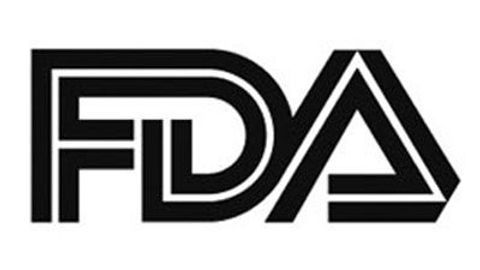FDA Accepts sBLA for Glofitamab Plus Chemo in DLBCL
The FDA has accepted an sBLA for glofitamab plus gemcitabine and oxaliplatin in relapsed/refractory diffuse large B-cell lymphoma.

- The FDA has accepted a supplemental biologics license application (sBLA) for glofitamab-gxbm (Columvi) in combination with gemcitabine and oxaliplatin (GemOx) for the treatment of patients with relapsed/refractory (R/R) diffuse large B-cell lymphoma (DLBCL).
- These patients must have received at least 1 previous line of therapy and are required to not be candidates for autologous stem cell transplant.
- A decision on approval from the FDA is expected to be made by July 20, 2025.
An sBLA for the use of glofitamab combined with GemOx in patients with R/R DLBCL treated with at least 1 prior line of therapy who are not candidates for autologous stem cell transplant has been accepted by the FDA, with a decision expected by July 20, 2025.1
Data from the phase 3 STARGLO study (NCT04408638) support this sBLA. Findings from the trial were presented at the 2024 European Hematology Association Congress and were recently published in The Lancet, showing that the combination of glofitamab plus GemOx led to a statistically significant and clinically meaningful improvement in overall survival (OS) vs rituximab (Rituxan) and GemOx.2 The glofitamab combination’s safety profile was consistent with the known safety profiles of the individual agents.
These results have been submitted to additional health authorities globally for approval consideration.1
Diffuse large B-cell lymphoma - Generated with Google Gemini AI

“For [patients] with aggressive lymphomas like DLBCL, timely intervention with effective therapies can be crucial to reduce the risk of disease progression and improve long-term outcomes,” said Levi Garraway, MD, PhD, Roche’s chief medical officer and head of global product development, in a press release. “We are encouraged by the overall survival benefit seen with this [glofitamab] combination and hope it can become an important treatment option for those who are in need of alternative therapies.”
Glofitamab is an off-the-shelf, fixed-duration treatment that engages and redirects T cells to eradicate malignant B cells.1 Earlier data from phase 1/2 studies have established a step-up dosing schedule and target dose of 30 mg with the agent in patients with B-cell non-Hodgkin lymphoma. When given as a monotherapy, glofitamab has produced deep and durable complete remissions in patients with relapsed/refractory DLBCL following 2 or more prior lines of treatment. In June 2023, the FDA granted accelerated approval to glofitamab for use in this population.3
About the Phase 3 STARGLO Trial
STARGLO is a phase 3, multicenter, open-label, randomized study where investigators are examining glofitamab’s safety and efficacy when given with GemOx vs rituximab plus GemOx for the treatment of patients with R/R DLBCL who have received at least 1 prior line of therapy and who are not candidates for autologous stem cell transplant, or who have received 2 or more prior lines of therapy. Enrollment was open to those with an ECOG performance status ranging from 0 to 2 and those with adequate hematologic and renal function.2
The primary end point of the trial was OS and secondary end points included progression-free survival (PFS), complete response rate, overall response rate, duration of response (DOR), and safety and tolerability.
In the primary analysis, which was conducted after a median follow-up of 11.3 months, those given the exploratory combination had a significantly longer length of survival, with a 41% reduction in the risk of death (HR, 0.59; 95% CI, 0.40-0.89, P =.011) vs the standard combination. The median OS was not reached (95% CI, 13.8-NE) with the glofitamab regimen compared with 9 months (95% CI, 7.3-14.4) with the rituximab and GemOx regimen (HR, 0.59; 95% CI, 0.40-0.89; P = .011).
At a median follow-up of 7.2 months, the median PFS with glofitamab was 12.1 months (95% CI, 6.8-18.3) vs 3.3 months (95% CI, 2.5-5.6) with rituximab (HR, 0.37; 95% CI, 0.25-0.55; P < .0001).
Safety data showed that adverse event (AE) rates were higher with the combination of glofitamab and GemOx vs rituximab and GemOx. Cytokine release syndrome (CRS) was one of the most commonly seen AEs, and was generally low grade. Any grade CRS was noted in 44.2% of patients, with grade 1, 2, and 3 CRS seen in 31.4%, 10.5%, and 2.3% of patients, respectively. Further, CRS primarily occurred in cycle 1.
REFERENCES
FDA accepts supplemental biologics license application for Roche’s Columvi combination for people with relapsed or refractory diffuse large B-cell lymphoma. News release. Roche. December 5, 2024. Accessed December 5, 2024. https://www.roche.com/media/releases/med-cor-2024-12-05
Abramson JS, Ku M, Hertzberg M, et al. Glofitamab plus gemcitabine and oxaliplatin (Glofit-GemOx) for relapsed/refractory (R/R) diffuse large B-cell lymphoma (DLBCL): results of a global randomized phase III trial (STARGLO). Presented at: 2024 European Hematology Association Congress; June 13-16, 2024; Madrid, Spain. Abstract LB3438.
FDA approves Genentech’s Columvi, the first and only bispecific antibody with a fixed-duration treatment for people with relapsed or refractory diffuse large B-cell lymphoma. News release. Genentech. June 15, 2023. Accessed December 5, 2024. https://tinyurl.com/4mz2ujcn









